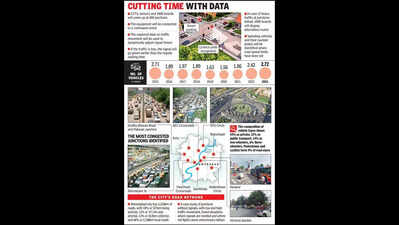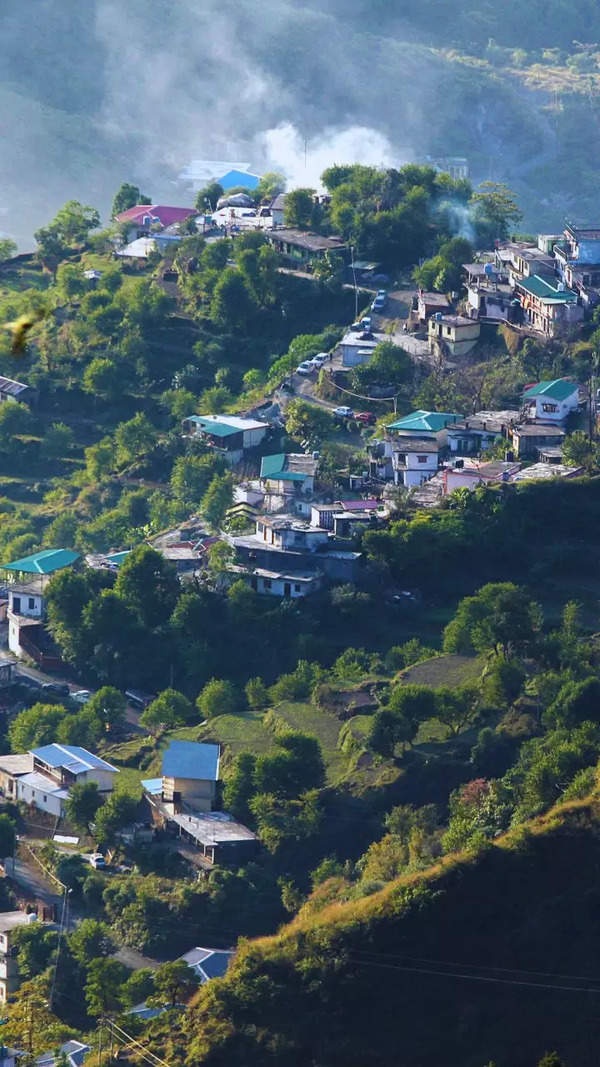- News
- City News
- ahmedabad News
- Adaptive signals to reduce waiting time at 400 junctions
Trending
Adaptive signals to reduce waiting time at 400 junctions
Ahmedabad: It's a common commuter peeve — having to wait long at traffic signals. At some junctions, the wait can be as long as 180 seconds. This is because timers have been set to specific periods, forcing commuters to wait out the entire duration even when the traffic flow is less. This may change if Ahmedabad Municipal Corporation's (AMC) dynamic plan succeeds. The civic body is preparing to implement the ‘Adaptive Traffic Control System' at 400 junctions, allowing traffic movement data analysis to automatically adjust signal timers, thus reducing wait times for drivers.
Long jams are often seen at junctions like Pakwan Junction and RTO Circle in Ahmedabad city. On Friday, a proposal to appoint a consultant for the system was approved at a Roads and Buildings Committee meeting. The consultant will be paid Rs 1.80 crore to oversee the tender process and implementation.
The equipment package at each junction will include CCTV cams, sensors, variable messaging display (VMD) boards, all connected to a command centre where data gathered from the signals will be processed to quickly adjust the timer as per traffic density. At times when traffic flow is low, the signal will not turn red, an AMC official said. Additionally, the system will be updated to identify speeding vehicles and their number plates.
The system will be integrated with Google Maps and other platforms to provide real-time traffic updates and suggest alternative routes, saving commuting time. It will also identify speeding vehicles and their number plates, ensuring adherence to traffic rules.
On VMD boards at each junction, commuters will be able to see the traffic situation at crossroads ahead. In case of congestion ahead, the VMC board will also display alternative routes. The AMC official said that the main aim of the signal is to alleviate traffic congestion.
Notably, Ahmedabad Smart City Company, under the Safe and Secure Ahmedabad (SASA) initiative, planned to install 6,500 CCTV cameras citywide at a cost of Rs 239 crore. Of these 1,999 were installed at 130 junctions for Rs 16.20 crore, but flyover work on 20 junctions meant that cameras here had to removed, leaving 1,749 operational at 110 junctions, the official said.
AMC data shows that Navrangpura ward has the most active cameras at 347, followed by Bodakdev with 170, and Jodhpur with 137. Other wards with over 100 cameras include Naranpura with 120, Jamalpur with 118 and Maninagar with 106.
In 2018-19, 242 cameras were installed at 17 signals, 1,170 at 75 signals in 2019-20, and 587 at 38 signals in 2020-21, totalling 1,999 cameras at 130 signals. No new cameras were installed from 2021-22 to 2023-24.
End of Article
FOLLOW US ON SOCIAL MEDIA
Visual Stories
Hot Picks
TOP TRENDING
Explore Every Corner
Across The Globe











